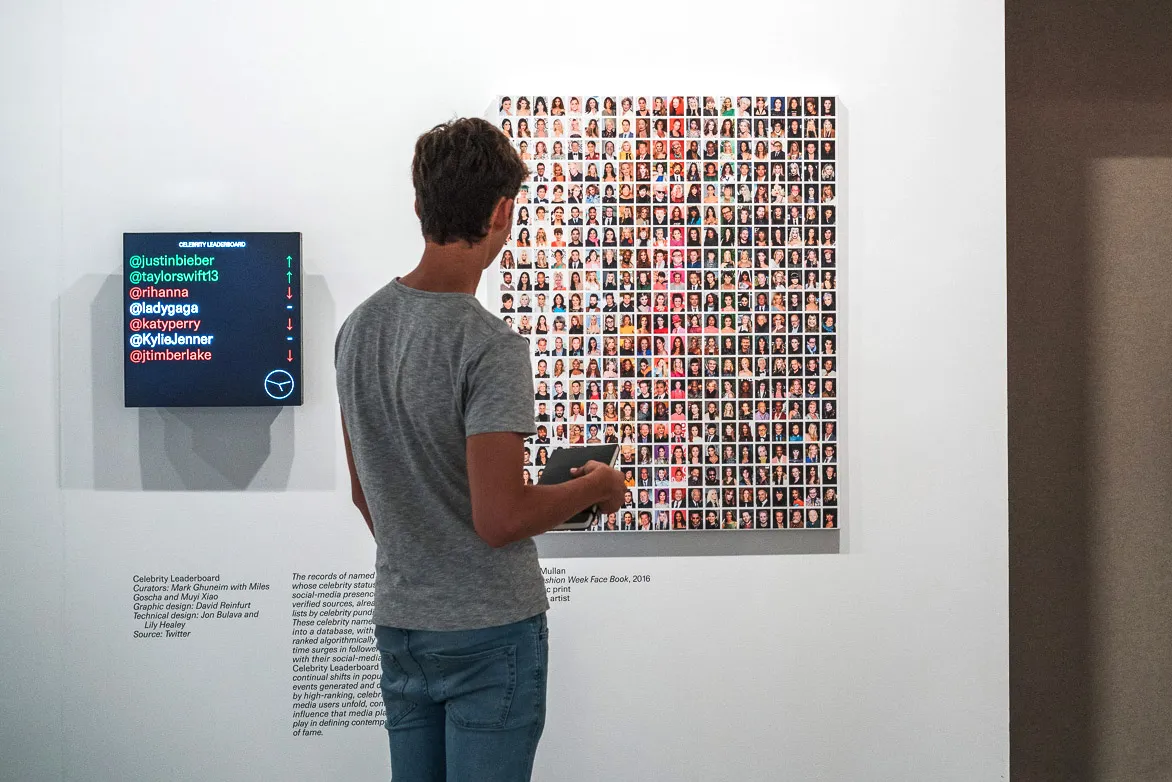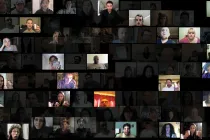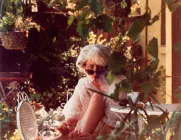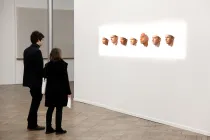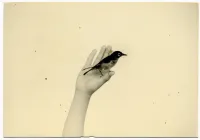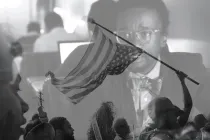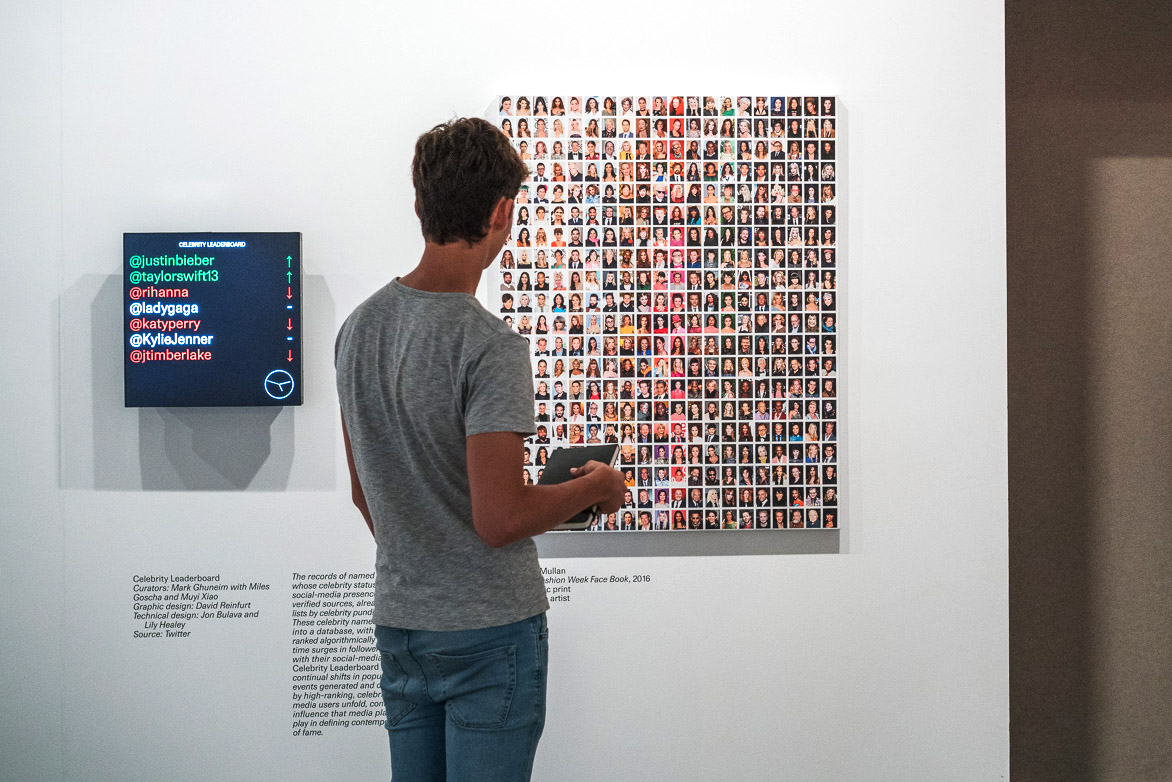
Charlotte Cotton: Mark, it’s a great pleasure to be sitting here with you at the end of quite a substantial collaborative journey, as we head towards the opening of Public, Private, Secret, which includes your brilliantly curated real-time media streams. I remember thinking, when I first met you last year, that I had a lot to learn from you! Collaboration, for me, is very much about creating something that neither participant would realize independently of each other. And I do think that this is what has happened here. Of course, your relationship with technology is both profound and long. Tell me what parts of your history have come into play in this project.
Mark Ghuneim: Well, firstly, I have to say that it’s amazing how personal it becomes to work on an exhibition that unpacks this issue of privacy. It is a complex issue that is being tackled in Public, Private, Secret and it becomes really personal really quickly. The point of reference from my own history that has made me uniquely suited to the challenge is that I like information as it happens. I think my video jockeying days in nightclubs before the Internet are manifest. At that point, it was this great visual menagerie of sound and visuals and you could see how images could affect a room of people—real-time images could turn a situation into anything from a riot to a party. Coming out of that early-1980s boom of the video jockey craft, the continuity of “cameras and screens” developed further for me, and in the early 1990s I was observing the beginnings of cameras appearing on the streets of New York. I started to question it: Who owned these cameras? What are they there for? A wall had symbolically been taken down and I wasn’t comfortable with it. So I documented all of the cameras pointed down onto people in public areas of the city—cameras owned by the city or private individuals—and published the map of the camera positions with the New York Civil Liberties Union. I was also obsessed with the processing of images over time. When I set up my first company, I employed people to pull images from live-media streams, and started to see and assess what we had, what we were collectively doing with images. So, for me, coming to this collaborative project was all of these things combined.
CC: What interested you in curating for Public, Private, Secret? Where does that fit in your creative story?
MG: What excites me at the highest level about what we have created is that this is the first time that any institution has done this kind of exploration of our real-time image world at scale. Scarcity really gets me excited! And the precise ways in which we are using real-time curation in this exhibition—to siphon off significant social observations so that we can see them—is a radical act. In this exhibition we are taking media as it happens and trying to create the right constructs of language and computer code for it to have real meaning—both subjective and objective. What is unique is that no two people will have the same experience of this exhibition because everyone will bring their own unique truth to bear.
CC: We’ve been working on seven curated streams that all reveal the real-time evidence of human behavior—and the behavior of images—through the lens of privacy. We have one stream called The Other that is this constant flow of “people of interest,” amber alerts, silver alerts, etc., and a strong reminder of how surveillance culture impacts on us. It’s exciting for me to see the ways in which each real-time twist and turn in that dense, constant flow of information impacts on my reading of the meaning of the historical and contemporary photographs in the exhibition. It’s an invitation not only to assess elements of our visual culture but also bring that into our reading of the works of art in the exhibition. I’ve had so many moments of revelation while looking at your real-time curation and I wonder if there have been such moments for you—whether a hypothesis or speculation you made as you constructed these curatorial frameworks has provided moments of revelation for you.
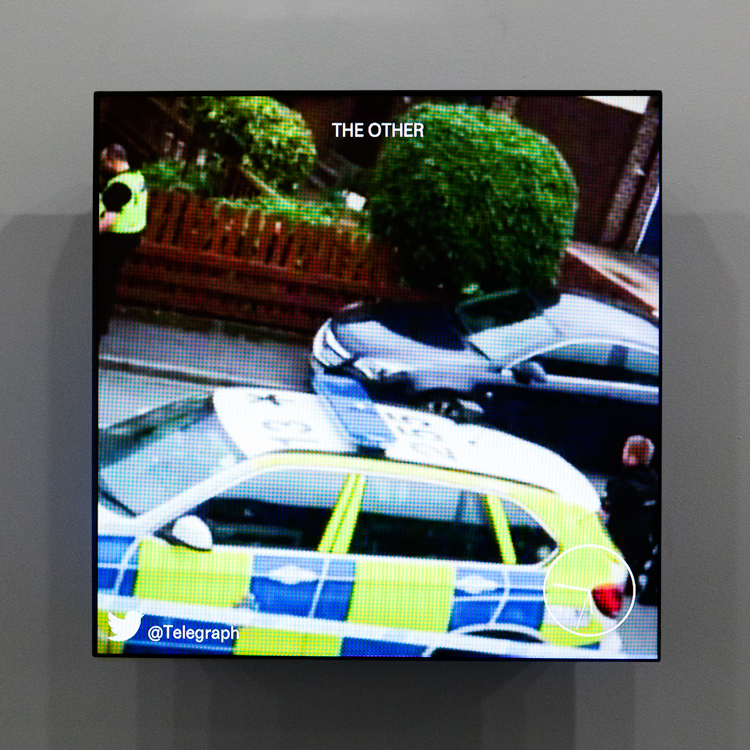
MG: What is happening in creator culture right now is incredible, and that stream really captures that. These are kids in their bedrooms making content, and more popular than the biggest movie stars of the age. And they are coming into our lives on this small, mobile screen. This feels potently present in the Creators real-time stream. And in the final week before this exhibition, the tragedy of the Orlando shooting happened and it began to appear in the real-time streams—The Other, Morality Tales, Transformation—in the exhibition. It was incredible to see this terrible event translate into social media and literally come into the narrative of this exhibition as it happened...To go back to your point about how the real-time streams impact on the meaning of the artists’ work in the exhibition, I am enjoying how your over-time curation meets the real-time. There is real beauty in the meeting of the ephemeral and the empirical in this exhibition. We aren’t keeping the real-time streams, we’re not archiving them, there’s no suitcase in the basement that I’ll make into a book in twenty-five years about the first time a museum curated real-time at scale! Each real-time image has the exact importance placed upon it for the moment that it is there. It’s all happening in the moment—real-time only matters in the moment, it’s ephemeral for a reason—and every viewer’s experience is going to be unique. What is so important about Public, Private, Secret is the observation and the measure of the complicated subject of privacy, unpacked in many different ways. The unifier for me is the measure given to the viewer and the fairness of the mirror it holds up to contemporary, historical, and real-time expressions of privacy within visual culture.
CC: I can’t think of another human being other than you that could have made this happen, Mark! I think that for both of us, the process of developing the presence of real-time curation in the exhibition had moments where we had to switch from being the (albeit non-institutionalized) arbiters and creators of the structures into taking what we were finding very personally. We became the first viewers of what we were discovering.
MG: Well, that’s the weird qualifier of this collaboration! We understood it when we needed to come together as a team to discuss—with Lily Healey and Jon Bulava on technical design, and David Reinfurt creating the visual representation and design of this real-time information—and then we all had to go into our separate corners and think hard about what we felt about it, before coming back in and making a measure of it. It’s been incredibly personal and intense. And we also worked with the first graduating year of the International Center of Photography’s New Media Narratives students who helped immensely to research and craft ideas, and shape the project. I hope they come into this exhibition and see themselves—see their work—on the walls. It’s what we all aspire to. It was a joy to work with them and indicative of how ICP works together.
CC: I totally agree. I think we have been part of a great demonstration of ICP’s capacity to embrace the present moment and stay committed to the big issues of our time—in the right way.
MG: It’s brave! It’s fast learning. Our decision to do this without a net and with full transparency—to just show real-time streams and not make decisions based on a group of people sitting in meetings debating whether we should do this—was the defining moment. There are institutions that are going to take a decade to work out the impact of digital and how it changes their organization. The insights out of this will save time, which is so valuable within this rapidly transitional society. I worked in the music industry and I watched it burn because it didn’t understand or adopt digital. And just as music is agnostic to device, art is agnostic to surface. So long as we can see it, hear it, and capture it in our heart, it just doesn’t matter. Here we have an institution called the ICP that talks with everyone who joins its school or walks through its doors and everyone in between. It is important for ICP to be presenting Public, Private, Secret now for the generations coming up, and to show that it is fully facing this inflection point—this radical moment—in culture. To do this simultaneously with the rebirth of this institution is incredibly ambitious but important to do. I mean, do not go gentle into that good night.
This interview was originally published on publicprivatesecret.org on June 13, 2016.


